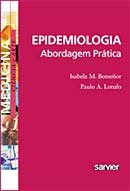 The New England Journal of Medicine publica hoje, resenha de três livros que discutem a participação histórica do agente ao lado na foto: Yersinia pestis. Agente da peste negra que alterou ou influenciou decisivamente vários momentos da história humana.
The New England Journal of Medicine publica hoje, resenha de três livros que discutem a participação histórica do agente ao lado na foto: Yersinia pestis. Agente da peste negra que alterou ou influenciou decisivamente vários momentos da história humana.Abaixo, um sumário dos três livros.
Justinian's Flea: Plague, Empire, and the Birth of EuropeBy William Rosen. 367 pp., illustrated. New York, Viking, 2007. $27.95. ISBN 978-0-670-03855-8.
Plague and the End of Antiquity: The Pandemic of 541–750Edited by Lester K. Little. 360 pp. New York, Cambridge University Press, 2007. $75. ISBN 978-0-521-84639-4.
The interval between the 4th and the 8th centuries saw the decline of the Roman Empire, the rise of Christianity, the beginning of the Dark Ages in Western Europe, the spread of Islam, and the establishment of the Caliphate. These events echo through time to today, but few people are aware of an important link connecting all these events
Plague Ports: The Global Urban Impact of Bubonic Plague, 1894–1901By Myron Echenberg. 349 pp., illustrated. New York, New York University Press, 2007. $48. ISBN 978-0-8147-2232-9.
When in his medieval masterpiece, The Decameron, Boccaccio pointed his finger at the infidel East as the cause of the "unpleasantness" that sent his storytellers wandering, he expressed the relentlessly popular explanation that epidemic catastrophes were caused by a corrupt "other." The consequence of this unyielding human prejudice has been unthinkable havoc and injustice imposed on scapegoated populations since antiquity. This was never more brutally the case than during visitations of the disease that defined the term pestilence and was the subject of Boccaccio's epic: bubonic plague.

Nenhum comentário:
Postar um comentário